Antique Art Restoration, Sculptur Bronze, Wood Statu.

|
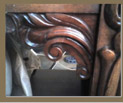 |
DARIUS Gubala Fine antique quality conservation and restoration Please note: our minimum fee on any restoration project is $400USD
|
|
|---|
Antique Art Restoration, Sculptur Bronze, Wood Statu.

|
 |
DARIUS Gubala Fine antique quality conservation and restoration Please note: our minimum fee on any restoration project is $400USD
|
|
|---|
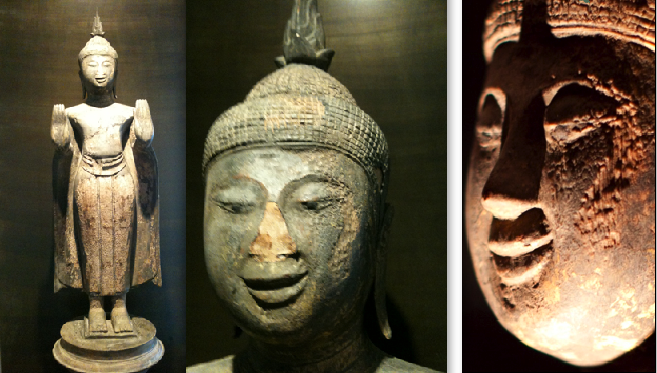
Nose before and after
Type of Object: The metal rod sticking, cut to length and bent to the approximate The epoxy I will use to glue things together is stronger than the |
 |
|---|
Type of Object: |
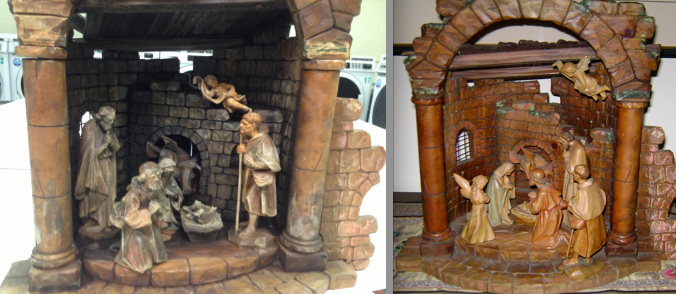 |
|---|
| Bronze Sculptures bronze restoration conserwation video |
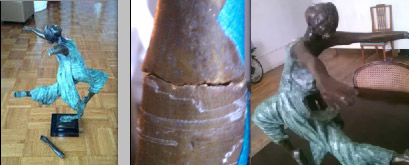 |
|---|
| Chinese 16th century wood panel with enamel and gild | 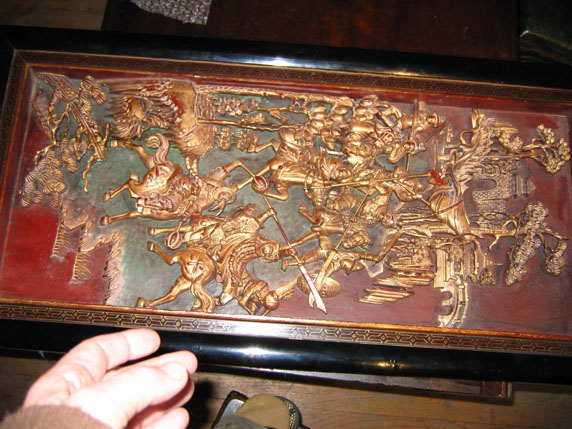 |
|---|
| Budda + furniture sculpture Type of Object: Antique Cast Buddha. Damage: loose sculptures of four parts. Treatment: hidden inside a solid structure, cleaning, retaching |
 |
|---|
Process of sculpture restoration.
Wood is a very open and porous structure, the bulk of which is water, absorbed or chemically bound to its thin-walled structural cells. Like many plant materials, wood responds to changes in the humidity of its surrounding environment, taking up available water to reach equilibrium with the environment or, conversely, giving up water if the surrounding air is dryer. Dimensional changes to the wood occur when this exchange takes place. As wood takes up water, it will swell. As it loses water, it will shrink, sometimes dramatically. Both actions induce considerable stresses on the structure of the wood, resulting in irreversible warping or complete splitting of the wood section. Additionally, the physical strain placed on the structure by continual expansion and contraction weakens the wood or may cause further serious damage to wood already weakened by insect attack or age. When decorated with paint, wood will respond to heat and moisture with greater movement, destroying the bond between the wood and the less elastic paint and ground preparation, resulting in the painted decoration's flaking away from the surface.
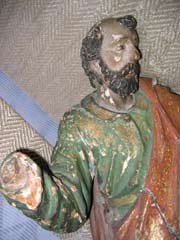 |
 |
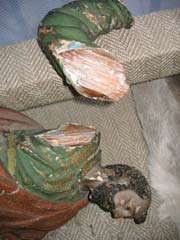 |
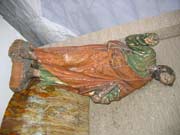 |
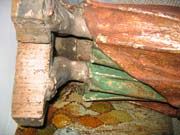 |
< view on the table |
Wood can also be a food source or a nesting place for a variety of insects such as wood-boring beetles, termites, and grubs. Infestation can be so severe that the sculpture loses all of its structural strength and collapses. Wood can also be damaged by a variety of fungi and bacteria with similar results.
The predominant concern regarding the preservation of wood is the control of the environment. Exposure to light, particularly the ultraviolet and shorter wavelengths of the visible spectrum, results in both the chemical and physical alteration of all organic material, including wood. Wood can become darker or lighter or lose its structural integrity through the action of light energy acting as a catalyst for other chemical reactions.
Appropriate and stable temperature and humidity levels and an environment low in ultraviolet radiation, illumination, and pollutants can ensure the slowing of any deterioration. Regular dusting and general maintenance of the sculpture, as well as vigilant actions to keep damaging insects away, are also paramount.
Paintings > Paintings on wood
Wood has been used as a support since the encaustic paintings of ancient Greece. Wood-panel supports were used almost universally in European art in devotional icons and other works before the 16th century, when the use of canvas became dominant. Wood has the disadvantage of swelling and shrinking across the grain when there are variations in the relative humidity of the atmosphere. In northern temperate climates, variations in humidity can be considerable.